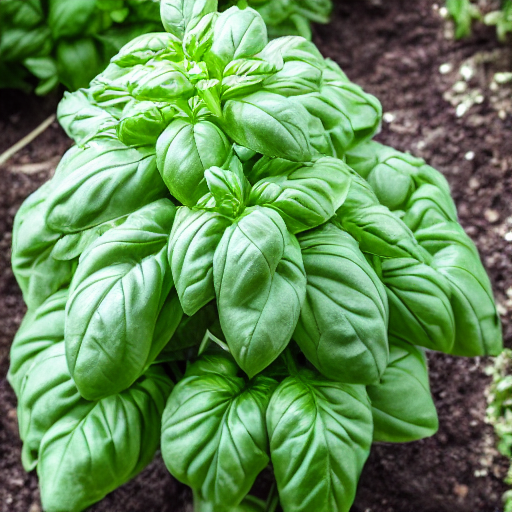Basil
Basil is a fragrant and flavorful herb that is commonly used in cooking and has been cultivated for thousands of years. It is native to tropical regions of central Africa and southeast Asia and is now grown and used in many parts of the world. Basil is a member of the mint family and has a distinctive aroma and flavor that is described as sweet, peppery, and slightly spicy. It is rich in antioxidants and has been used in traditional medicine for its potential health benefits.
Basil is a versatile herb that can be used fresh or dried in a variety of dishes. It is a common ingredient in Italian cuisine and is often used in dishes such as pesto, tomato sauce, and caprese salad. In Thai cuisine, basil is used in stir-fries and curries, and in Vietnamese cuisine, it is used in pho and spring rolls. Basil is also used in herbal teas, and its essential oil is used in aromatherapy and natural remedies.
In addition to its culinary uses, basil is believed to have potential health benefits. It is rich in antioxidants, which can help to protect the body against oxidative stress and inflammation. Basil also contains compounds that may help to lower blood sugar levels, reduce stress, and improve cardiovascular health. However, more research is needed to fully understand the health benefits of basil.
Overall, basil is a versatile and flavorful herb that can add a unique touch to many different dishes. Its potential health benefits make it a healthy addition to any diet, and its distinctive aroma and flavor make it a popular choice in many different cultures around the world.
Herbs share a few properties. One of them being that they can be bought and used fresh, dried at home from fresh or bought dried. Nutrient quantities can vary wildly based on which of those categories of herbs you’re consuming. Unfortunately, nutrition data is usually not available for fresh herbs.
One thing to consider is that herbs are usually consumed in quantities that make it so you’re more interested in the various polyphenols, alkaloids, terpenes etc - many of which exhibit promising health benefits - than you are vitamin, mineral or macro content as it applies to your broader diet.
Highlights
- The typical serving size for Basil is very small, so while it may be rich in some nutrients, we can't consider it a good or exceptional source.
 eat a plum
eat a plum